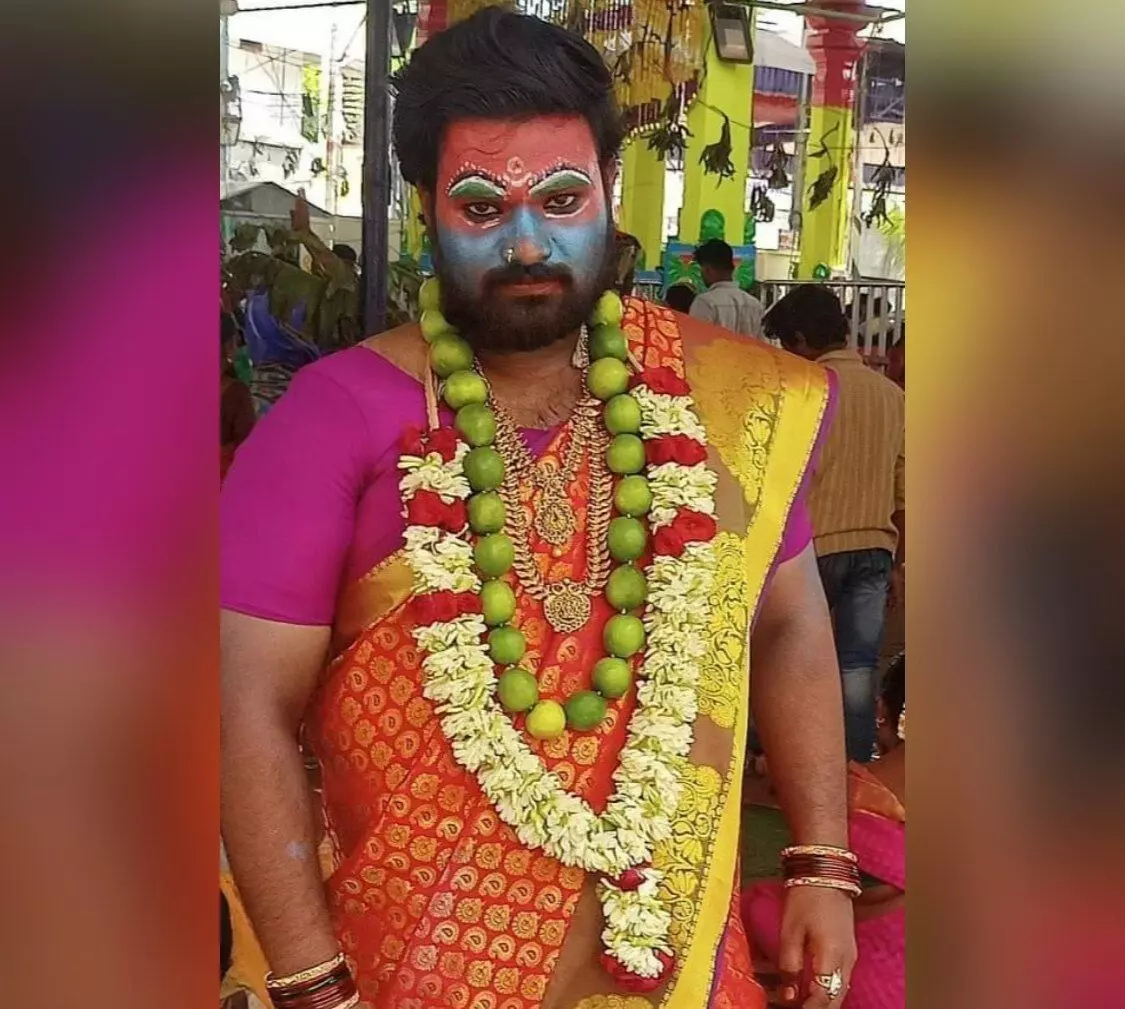Tirupati Gangamma Jatara: Why it is celebrated and its significance
Even children take part in the festival where they dress up as Bairagi, painting their bodies with white paste (Namam Kommu)and applying dots with charcoal
By Sri Lakshmi Muttevi
Tirupati: The Tirupati Tataiahgunta Gangamma Jatara this year was a massive hit with many sporting the Matangi attire made popular by Allu Arjuna in his upcoming film ‘Pushpa 2.’ Also, many boys dressed up in women’s attire while their sisters and family members accompanied them in the procession.
Inspired by the Matangi outfit from the upcoming film ‘Pushpa 2’ starring Allu Arjun, Tirupati MP Gurumurthy stole the spotlight at the festival with his Matangi attire.
The festival is celebrated from 9-17 May and features various activities with people dressed up in different attires. This year, the Andhra Pradesh government agreed to observe Gangamma Jatara as a state festival.
The festival is celebrated to praise the valorous act of Gangamma slaying Palegondulu, to punish him for his demonic character of outraging the modesty of women. So, dressing up as a woman to pay obeisance to the goddess is considered an ‘ode’ to womanhood. During the festival, men dress up traditionally draping sari or other dress donning wigs, lipstick and jewellery.
What is the jatara?
Tirupati Gangamma Jatara, the annual folk festival of Tirupati, is celebrated for a week every May. This festival is to offer prayers to Goddess Gangamma (sister of lord Venkateshwara) at Tataiahgunta Gangamma temple located on the east side of Tirupati city. It is believed that the goddess looks after the village of Tirupati.
During the festival, a set of divine gifts are presented by the Lord to his sister as a customary practice.
As the Gangamma temple is located on the banks of Thathaya gunta, the temple is famously known as Tataiahgunta Gangamma temple. This festival is celebrated in most areas of Tirupati and Chittoor districts.
Why is it celebrated?
According to history, long ago when Palegondulu ruled Tirupati and the surrounding areas, men used to harass and rape women. No woman was spared. During this time, people believed that Goddess Gangamma was born in the village Avilala, located 2 km away from Tirupati. She was said to be the most beautiful woman. When one of the Palegondulu wanted to harm the goddess, she showed him her ferocious side. Out of fear, the Palegondulu started hiding in remote places.
To bring them out and end their atrocities, Gangamma planned the Ganga Jatara where the people of Tirupati dress up in fancy attires for seven days. On the seventh day, it is said that Gangamma dressed in the attire of a Dora (king) and the Palegondulu came out thinking that their king had come. The goddess then killed them for the welfare of the people.
On that day, people offered prayers to the goddess and asked her to stay in their village.
Bairagi Vesham
Even children take part in the festival where they dress up as Bairagi, painting their bodies with white paste (Namam Kommu)and applying dots with charcoal. They hold neem leaves in their hands, tie them around their waists, and wear a garland made of “Rella kaya” (a fruit).
Parents take their children to the temple and leave those garlands and neem leaves for the goddess.
Chempa Tholagimpu
No resident leaves their town during the festival. Priests make a huge traditional clay idol of the goddess at the temple’s portico.
On the last day of the festival, people visit the temple and offer pongallu (a rice-based offering) and sarees to Gangamma. On the last day, a man will dress up as “Perantallu” and remove the cheek of the clay idol, which is referred to as “Chempa Tholagimpu,” a customary practice.
The clay is later distributed to the devotees, and it is believed to have curing powers. It is then preserved at people’s homes.
Photo Credits: Sathwik Aramadaka, Chiranjeevi Gorlagunta, Kiran.